When it comes to clothing my preference is modesty, beauty and simplicity, like the pictures of the women above and immediately below. Sadly, such dress would be rather conspicuous in our society, being as it has more in common with the ancients than moderns, and since we are not supposed to draw attention to ourselves, we must adapt somewhat.
As in so many different spheres of activity, the same philosophy surrounds our attitudes to clothing. We basically seek for beauty, elegance, modesty, simplicity and practicality. Rather than try to describe to you the kind of clothing I like my women to wear (which I would fail miserably at doing), I will instead simply show you some pictures that they themselves have picked out over the years.

The basic rules we follow in our family are as follows. A husband or wife dresses (a) to honour Yahweh, (b) to please his wife/her husband, and (c) to be comfortable. We do not dress to please others or to show off to the world. Clothing is therefore a private matter between me and my wives.
By honouring Yahweh I mean observing the biblical requirements for modesty and careful sexual separation. The Bible strictly forbids unisexual clothing - men and women are to dress differently. It means not being sexually suggestive or exposing oneself. Needless to say a high proportion of the world's styles and fashions do not satisfy the biblical requirements.
What are the boundaries? In an ideal Edenic world we could probably all walk around naked and it wouldn't matter but in this one, drenched in sin as it is, with lustful eyes everywhere, special precautions need to be taken. I do not advocate the kind of extremes required by Moslem Sharia Law which goes far too far in the opposite direction, quenching beauty altogether.
Historically, women have dressed in all sorts of different ways throughout the ages, illustrating different ideas about modesty even in biblical times. Here are some examples of clothing worn by the ancients:
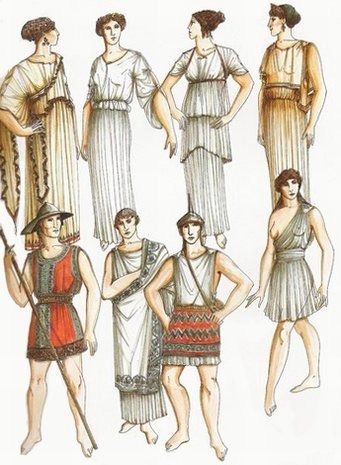 Common urban clothing of the ancient Greeks
Common urban clothing of the ancient Greeks
 Common urban clothing of Roman women
Common urban clothing of Roman women
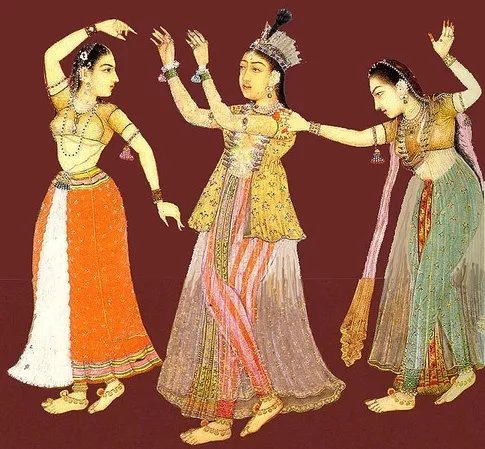 Common urban clothing of Indian women (Mogul period)
Common urban clothing of Indian women (Mogul period)
 Typical pre-colonial urban Indian lady's dress
Typical pre-colonial urban Indian lady's dress
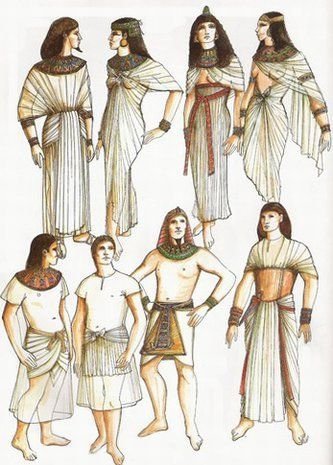 Common urban clothing of ancient Egyptians
Common urban clothing of ancient Egyptians
Clothing was, for the most part, influenced by climate so that in extremely hot conditions, as obtained in the Middle East and in the Mediterranean generally where the Bible was born, it was not abnormal for women, as an option, to only be clad from the waste downwards, and no one thought twice about it, as remains true in rural Africa and elsewhere today. Indeed this was common in pre-colonial Asia, Polynesia, America and even Europe:
 Common dress in rural Africa where Islam does not predominate or
Common dress in rural Africa where Islam does not predominate or
where, in some cases, the former colonial power was Catholic
In the very advanced and complex ancient cililisation of Minoan Crete (3650-1400 BC), reflected in part by the artistically designed and skillfully made clothing they wore, blouses were shaped to the body of the wearer which closely resembled modern women's clothing, though cut low to expose the breasts. It is believed by some scholars that the Minoans were the forefathers of the Philistines:
 Urban Minoan women
Urban Minoan women
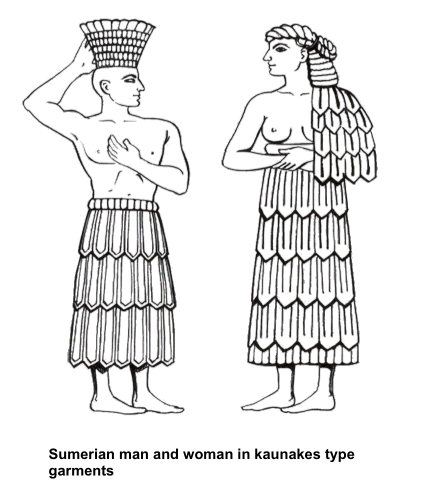
 Polynesia and East Asia before the Europeans
Polynesia and East Asia before the Europeans
Such innocence as may have obtained back then, and which survives only in a few areas of the world like rural Africa, is largely ancient history and is not something the world in general is likely to return to, nor indeed should it in view of all the perversion everywhere. Thus it is right that Christian/Messianic women everywhere cover up fully and modestly. What follows is a personal view of clothing for women, both of myself and my wives. Throughout our ministry's long history the only exception we have allowed is in those places, like rural Africa, where a woman fully covering up is viewed as a prostitute and is therefore a great shame in that culture.
I personally do not like women in trousers, shorts or slacks though I concede sometimes some of these are necessary in harsh climates and in specialised working conditions. It seems to me that the Pakistani women have got around this problem by combining trousers with skirts and this is certainly an acceptable solution as you will see in some of the examples below. Because of the world I do not think women should wear tight-fitting clothes that reveal their contours, except in private at home to their husbands.
A useful place to start would be the Dress Code of the Chavurat Bekorot, showing the broad guidelines followed by members of our ministry, which our family submits to, though it mostly applicable in the West and in metropolitan areas elsewhere which are largely Westernised. We counsel that our people blend in as much as possible with the overall 'drift' of the culture they find themselves in, again so as not to stick out unnecessary. You can't avoid the latter completely, of course, especially where it comes to women wearing head coverings. As far as the latter are concerned, our counsel is to make it simple and to avoid resembling Moslem women's head coverings.
What follows are various collections of clothing selected by my wives over the years (minus head coverings). In order to keep this article uncluttered, I asked them to pick four favourites each. Finally, I shall make my own selection. This will be a continuing project as other wives share their preferences.
Isabel's Collection (ca.2001)

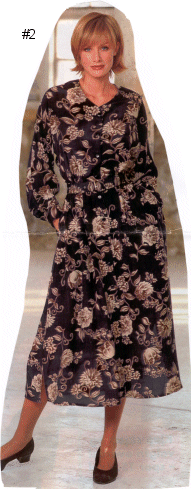
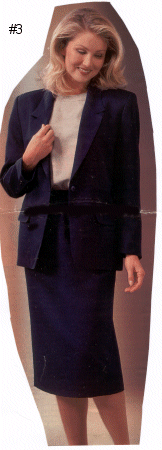

Kryztina's Collection (2016)
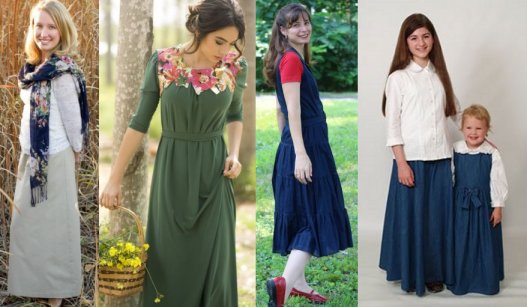
Angelka's Collection (2016)
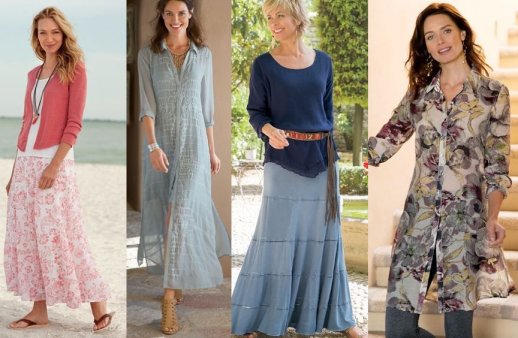
Zyta's Collection (2016)
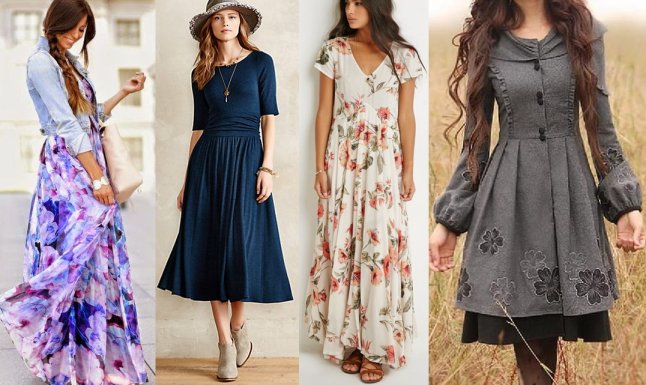
Stanisław's Collection (2016)
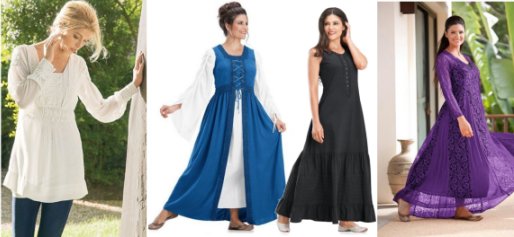


Author: SBSK















































